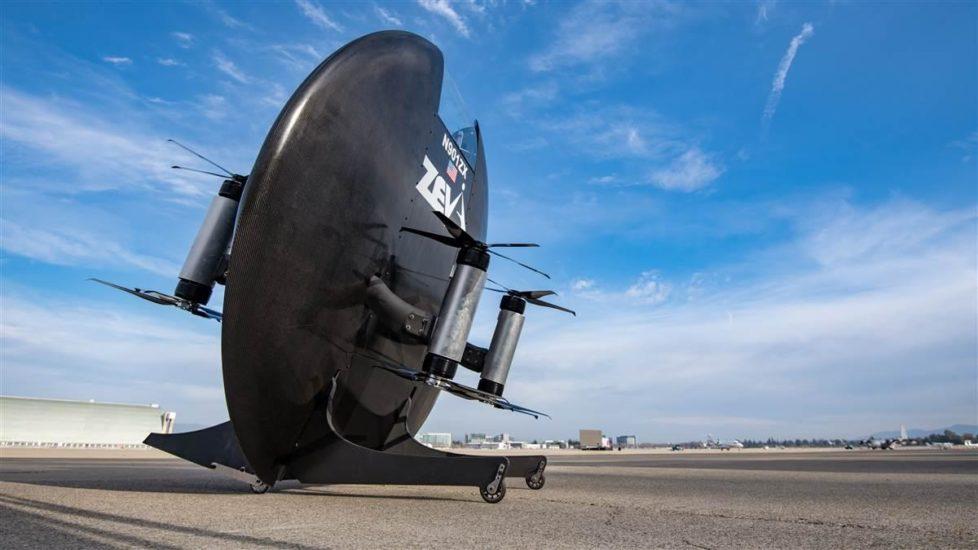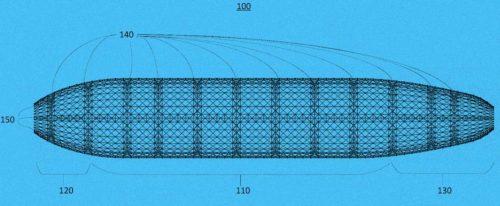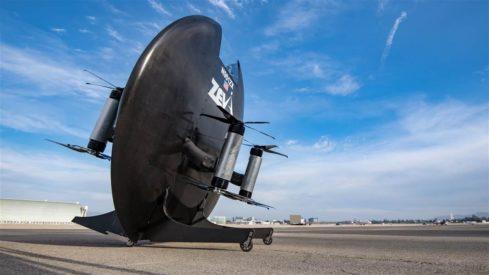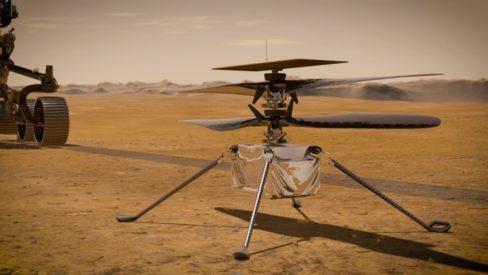From Urban Air Mobility to Interplanetary Mobility
Newly Identified Flying Objects: VTOLs Not Yet on the Radar

The U.S. Department of Defense recently confirmed that photos and videos taken by U.S. Navy personnel in March 2019, and subsequently leaked to the press, are legitimate images the Navy pilots shot of “unidentified aerial phenomena (UAP).”
The videos show acorn-shaped aircraft with capabilities beyond anything known to the U.S., its allies, or adversaries. As extraordinary as that may be, here are a few noteworthy eVTOLs and hybrid eVTOLs in development we’ve identified for you.
Look! Up in the Sky, It’s a Bird, It’s a Plane. Nope, It’s a Blimp.
On May 6, 1937, the era of the passenger airship (a type of aerostat – a lighter-than-air-aircraft, also known as a dirigible balloon or blimp) came to a notoriously abrupt, disastrous end when The Hindenburg, a German-flag carrier, caught fire. It was destroyed as it tried to dock at Naval Air Station Lakehurst (New Jersey) after its Trans-Atlantic flight. Of the 97 people aboard, 36 lost their lives.
Except for the tire manufacturer, Goodyear, which famously flew its Goodyear Blimp above outdoor sporting events in the U.S. from 1925 to 2017, since then, aerostats pretty much had the air, or more properly, helium, let out of their balloons.
Until now, that is.

Illustration of the airframe of LTA’s proposed airship submitted to the US Patent Office (Photo courtesy of LTA Research and Exploration)
A new player, Lighter Than Air Research, is preparing for takeoff. LTA has facilities in Sunnyvale, California, and Akron, Ohio. The player behind the new initiative is Google co-founder, Sergey Brin. Brin hopes to develop an airship to deliver humanitarian aid to places where other aircraft might have difficulty providing it, all while reducing carbon emissions.
Brin has sold his first unit of the 18-meter (about 59 feet) long, 12-engined, all-electric aircraft, the Airship 3.0.
It sold for US$18.70, a sum some speculate is an homage to the University of Akron, Ohio, where Brin’s associate Nicholas Garafolo is an associate professor in the Mechanical Engineering department.
The Airship 3.0 will carry both hydrogen (a hydrogen fuel cell) and helium on board to lift and propel the aircraft on its missions.
The ZERO eVTOL Has A Lot Going for It

The ZERO from Zeva Aero definitely has a vertical design approach to vertical flight. (Photo courtesy of Zeva Aero)
Founded in 2017 to compete in Boeing’s GoFly competition, Tacoma, Washington-based Zeva Aero is aiming low, so to speak.
Looking a bit like an oversized, old school Walkman CD player, the Zeva Aero ZERO is as personal an eVTOL as you might find. Capacity: one person (220 lbs. or about 100 kilos). Zero emissions. Zero landing strip required, any old 30’x30’ (about 9m by 9m) landing area will do.
The personal aircraft has a flat shape and is designed so a pilot tilts with it as it moves from being vertical to its horizontal forward flight mode. It is designed to dock directly to buildings. Two ZERO eVTOLs would fit inside a regular two-car garage.
Founders Stephen Tibbits and Ben Gould anticipate the ZERO’s 50-mile range (about 80 kilometers), 160 mph (about 260 kph) cruise speed, and 200-lb.(about 90 kilos) payload could transform personal air travel, emergency response, search and rescue, law enforcement, package delivery, and ship-to-shore transportation.
Martian Chronicles, NASA’s Ingenuity
The world is familiar with the first successful airplane flight, the Wright Brothers’ historic sortie at Kitty Hawk, North Carolina in 1903. Considerably less well-known, was the world’s first flight of a vertical lift aircraft (aka an helicopter).
That flight took place on September 14, 1939, at Stratford, Connecticut when designer Igor Sikorsky’s Vought-Sikorsky Aircraft Division of the United Aircraft Corporation made its tethered flight with the VS-300.

The NASA Ingenuity Helicopter, an ‘out-of-this-world’ eVTOL that recently explored Mars. [Photo courtesy: NASA]
Ingenuity is a battery-powered coaxial drone rotorcraft. The VS-300 hovered for just a few seconds.
Ingenuity’s first Martian venture had it rise 3 meters (about 9.8 feet) for 39.1 seconds with longer flights planned.
Cargo Ships, Reimagined for the 21st Century
San Francisco, California-based MightyFly is hoping to revolutionize air cargo logistics with two planned versions of its hybrid-electric VTOL. The smaller version, the MightyFly MF-100, will have a cargo capacity of 100 lbs. (about 45 kilos), a cruising speed of 150 mph (about 240 kph) and a range of 600 miles (about 960 km).

MightyFly co-founders Scott Parker and Manal Habib with their autonomous air cargo eVTOL, the MF-100.
The larger version, the MightyFly MF-500, expects to have a cargo capacity of 500 lbs. (about 227 kilos). The MightyFly will use electricity for takeoff and landing, switch to gasoline during flight, and switch back to electricity for landing.
Co-founders Manal Habib and Scott Parker envision a “van in the sky,” capable of landing in the equivalent of two standard parking spaces.
MightyFly is targeting the retail, medical, and logistics markets and aims, for example, to make deliveries of repair parts to gas stations. Habib recently told AeroCar Journal that both MightyFly aircraft will be able to recharge their batteries inflight and will fly autonomously with remote support.
The MightyFly will feature automated cargo loading and unloading, meaning it will not require any launch or recovery infrastructure as it provides ad-hoc deliveries to undeveloped sites and service to established facilities.
MightyFly has obtained a special airworthiness certificate from the US FAA for its MF-100 to start conducting test flights.



